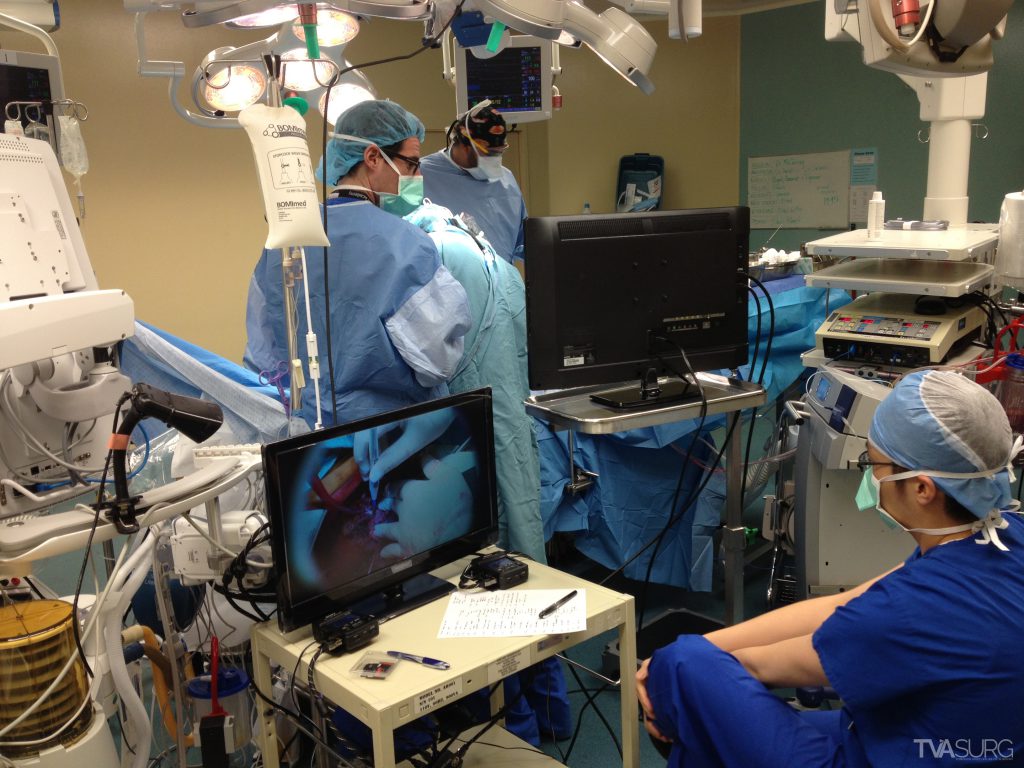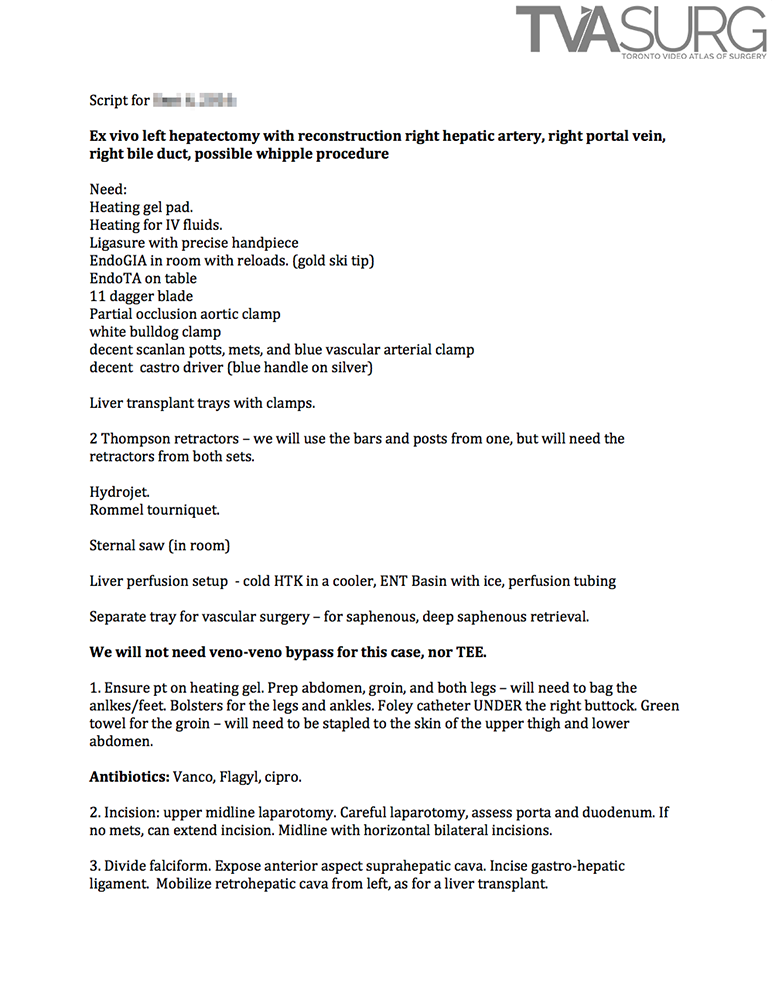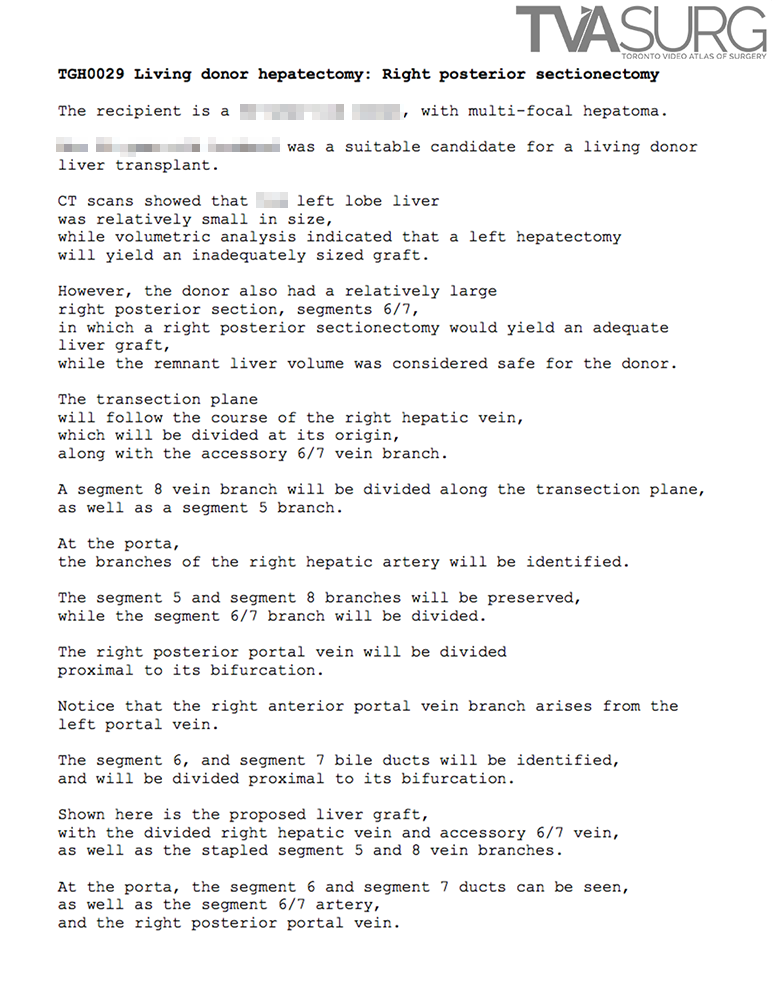The mission of TVASurg is to help surgeons teach. Our specialty is found not only in our technical skills–medical illustration, video editing, 3D model reconstruction, 3D animation, and VR experience design–but also in our ability to communicate complex medical procedures using the most appropriate means available.
Studies which evaluate the quality of surgical videos note that organized educational structure to the videos is often absent. Our 3D animations can only be produced as a result of scripted, curated, and meticulously refined organized content. Because we work with experienced staff surgeons who are respected in their fields and passionate about teaching, our videos inherently contain a solid educational foundation.
We’d like to share some of our insights into the core components of our production process that have allowed us to generate a growing library of 3D animation-enhanced educational surgery videos, that are amongst the highest quality in the world.

A step-by-step Script of the surgical procedure is the best place to start when producing high-quality surgical videos. A text document is far easier for content experts and content producers to review and edit, and allows critical teaching points to be identified as early as possible in the development process.
THE SCRIPT(s)
One of the first innovations we developed and integrated into our video production pipeline was the surgical procedure Script, or OR script. The OR script will later evolve into the video's narration script, but it has specific attributes of its own that makes it a valuable addition to our process.
It may seem obvious to anyone who has produced videos before that you need a script to start out with, but this is not as obvious in the realm of surgical videos. This is perhaps due to the assumption that senior surgeons who produce their own videos already know the key steps of a procedure, and a corollary assumption that the target audience of junior surgeons should also know the key steps of a procedure.
From our experience of filming and editing numerous surgical procedures, we have learned that it is quite common for their to be several valid approaches to any given surgical challenge, and therefore, it is tremendously helpful to write out ahead of time what is planned to, quite literally, get everyone "on the same page."
The OR script helps not only to provide a foundation for the surgical video narrative. Before filming our cases our surgeon will distribute the script to all of the OR staff–the anesthesiologist, surgical fellows and residents, radiologist, circulating and scrub nurses, and any other personnel involved in the case. Surgical equipment and medications may be included here, and notes of time-sensitive steps and anticipated challenges. This gives a heads up to everyone involved what equipment must be made available, the expected sequence of critical moments during the case, and provides an itinerary that helps staff track the expected completion of the case in relation to where the surgical team is at any given moment throughout the case.
After filming, the OR script is used throughout video editing to ensure the critical teaching points are shown. If a critical teaching point was not captured during filming, the video production team will know that preparations should be made to make a demo animation shot for that step. The OR script will also form the basis for the narration script–statements that will be read aloud by our narrator during the video to describe the action on screen. Major steps, structures and actions seen in the final cut of the video will be described using the narration script.
With the surgical script on hand, weʼll be well prepared for the critical phase in our production workflow, live filming in the OR. Tune in next month where we’ll discuss our unique approach to filming surgical procedures!
REFERENCES
Ahmet, A., Gamze, K., Rustem, M., & Sezen, K. A. (2018). Is Video-Based Education an Effective Method in Surgical Education? A Systematic Review. Journal of surgical education, 75(5), 1150-1158.
de’Angelis, N., Gavriilidis, P., Martínez-Pérez, A., Genova, P., Notarnicola, M., Reitano, E., ... & Carra, M. C. (2019). Educational value of surgical videos on YouTube: quality assessment of laparoscopic appendectomy videos by senior surgeons vs. novice trainees. World Journal of Emergency Surgery, 14(1), 22.
Chaoyan Dong & Poh Sun Goh (2015) Twelve tips for the effective use of videos in medical education, Medical Teacher, 37:2, 140-145, DOI: 10.3109/0142159X.2014.943709
Green, J. L., Suresh, V., Bittar, P., Ledbetter, L., Mithani, S. K., & Allori, A. (2019). The utilization of video technology in surgical education: a systematic review. Journal of Surgical Research, 235, 171-180.
Haluck, R. S., & Krummel, T. M. (2000). Computers and virtual reality for surgical education in the 21st century. Archives of surgery, 135(7), 786-792.
Rapp, A. K., Healy, M. G., Charlton, M. E., Keith, J. N., Rosenbaum, M. E., & Kapadia, M. R. (2016). YouTube is the most frequently used educational video source for surgical preparation. Journal of surgical education, 73(6), 1072-1076.


